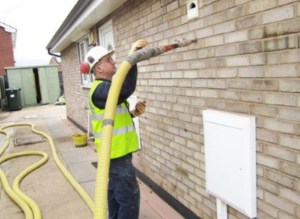Like many property investors I must confess that I have properties that aren’t as energy efficient as they should be. Yep, hands up I have generally favoured gas boilers to provide heating and hot water – which is also true for 20 million (85% of) UK homes.
But, like others I am becoming increasingly aware of the environmental impact of heating these homes in this way and when I hear statistics like “around 20% of all UK carbon emissions come from home heating”, I start to think I could be doing my bit – both as a homeowner and a landlord.
For the UK to achieve its target of reaching net-zero carbon emissions by 2050 the efficiency of homes needs to improve and with it I dare say the traditional gas boiler will have it’s days numbered. But even having a swanky new, more efficient boiler won’t solve the problem by itself – the property also needs to be well insulated.
In September this year, the Government announced the Green Homes Grant and whilst this doesn’t cover replacing a boiler, it does, amongst other things provide financial help to make homes more insulated and otherwise more energy efficient.
The Green Homes Grant Scheme has now been extended to the end of March 2022 – allowing more time to make these improvements, which is helpful since even the most willing homeowners might struggle to get the work done due to qualified tradespeople being booked up months in advance.
So what is the Green Homes Grant?
Homeowners in England are able to claim up to £5,000 – or in low income households, up to £10,000 – in energy-saving vouchers to pay for work to insulate and heat their properties more sustainably. The vouchers will cover at least two thirds of the cost, up to £5,000 per household.
So, for example, if you’re installing cavity wall and floor insulation costing £5,000, you’d be able to claim vouchers for £3,300 and only have to find the remaining £1700. For low income households 9in receipt of certain benefits), the government will cover the full cost of an installation, up to £10,000.
What can the money be spent on?
There are different energy-saving features, but firstly you have to install at least one “primary measure” which are all about improving insultation or providing low-carbon heating. Primary Measures include:
Insulation
solid wall
under floor
cavity wall
loft
flat roof
room in roof
Low-carbon heating
air source heat pump
ground source heat pump
solar thermal (liquid filled flat plate or evacuated tube collectors)
biomass boilers
To have low-carbon heating installed, you’ll need to make sure your house is properly insulated with either cavity or solid wall insulation, and loft insulation, if applicable. If you don’t, you could have these installed as part of the package.
One important thing to keep in mind is that you can’t use the grant to pay for the replacement of existing insulation or low-carbon heating. It can only be used for the installation of new measures where there weren’t any previously.
If you’re having one of the above primary measures installed, you could also qualify for a voucher of the same value toward one or more of the secondary measures, which include:
draught proofing
double/triple glazing (only if replacing single glazed windows)
secondary glazing (in addition to single glazing)
external energy efficient doors (replacing single glazed or solid doors installed before 2002)
heating controls
hot water tank thermostats and insulation
The total value of the secondary measure cannot exceed the value of the primary measure.
The scheme is open to all homeowners in England, including landlords – they do not qualify to receive the low-income portion of the grant, so are limited to a voucher of up to £5,000.
New builds that haven’t yet been occupied are not eligible
Who can carry out the work?
Anyone hired for the work should be TrustMark approved or registered with the Microgeneration Certification Scheme (MCS). There will be a list of recommended and accredited suppliers on the Simple Energy Advice website when applying.
I always recommend getting at least 3 quotes for any work to be done – and this rule of thumb should still apply.
You can apply via the Simple Energy Advice website, where you can get more information and find out what energy-efficiency improvements can be made.
It honestly seems like a no-brainer to me and if I save money on future heating bills, then it’s a double whammy.
Happy Days.

